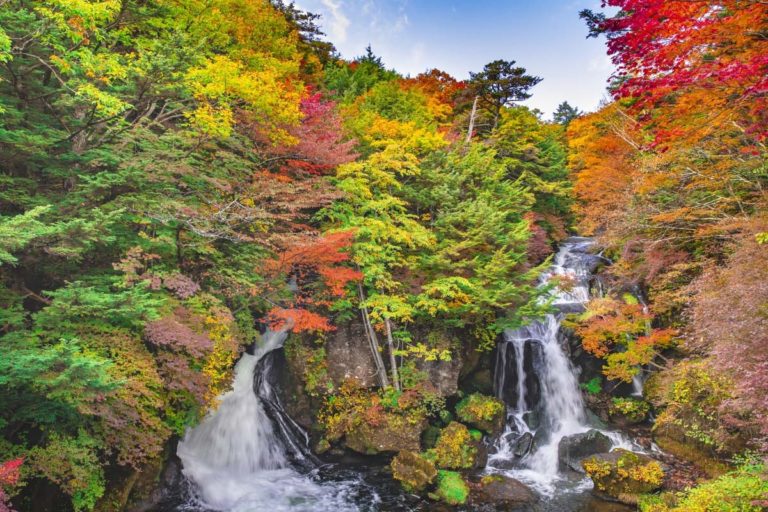
10 Hot Spots to see Autumn Leaves in Kanto Area 2021
Travel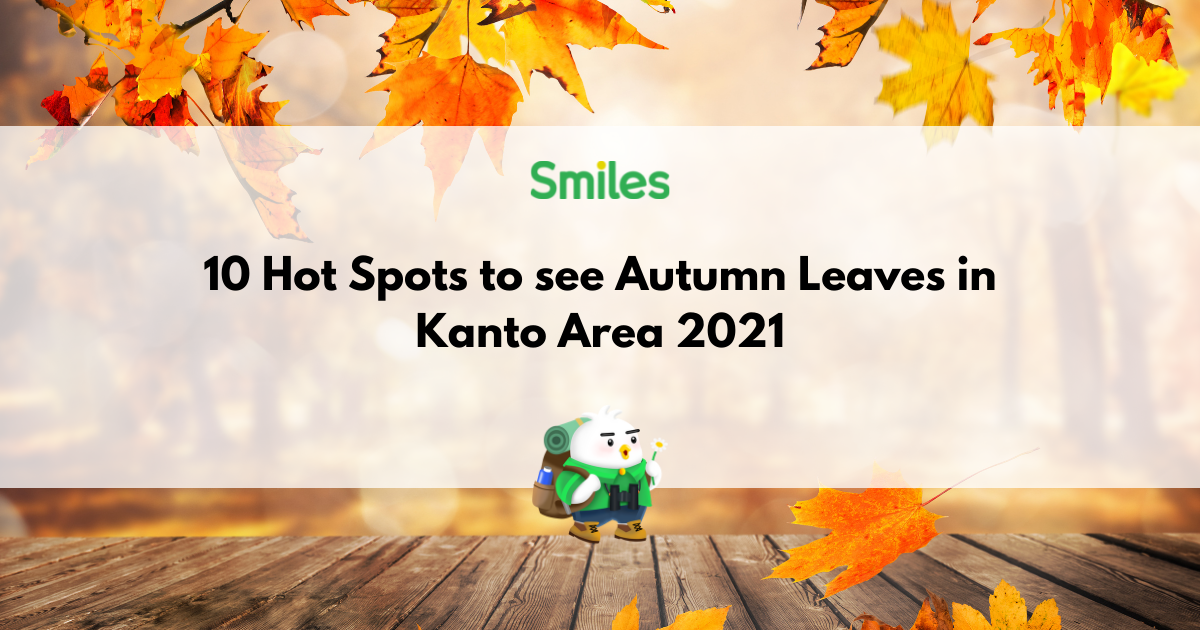
Autumn brings out the most colorful and vibrant side of Japan. Not only do big cities like Tokyo offer places to see the beautiful autumn leaves, but there are also many beautiful places in various cities and countrysides in the Kanto region such as Saitama, Chiba, Ibaraki, Kanagawa and Tochigi. The season to see the autumn leaves in Kanto is from September to December, depending on the location. For this blog, you will see 10 places to see autumn leaves in the Kanto area.
Before you start looking, feel free to take a look at the list of Japanese vocabulary words related to this blog’s topic:
Fall/autumn – 秋 (aki)
Autumn leaves – 紅葉 (kouyou)
Japanese maple leaves – 紅葉 (momiji)
Fallen leaves – 落葉 (rakuyou)
Autumnal equinox – 秋分 (shuubun)
10 Places to See Autumn Leaves in the Kanto Area 2021
Table of Contents
1. Autumn leaves in Todoroki Valley 等々力渓谷公園 (Tokyo)

Todoroki Valley is a park located in the bustling city of Tokyo. The park is in Setagaya, Tokyo which has a small river along the park and is about one kilometer long. There’s also a red bridge which is commonly found in other Japanese gardens. It’s an ideal place to take photos for your Instagram account. Near the end of the valley, there is a temple that overlooks a forest of red Japanese maple leaves. If you’re in the Tokyo area, the location is only about 20 minutes from the center of Tokyo.
Location: Todoroki Ravine Park, 1 Chome-22 Todoroki, Setagaya City, Tokyo 158-0082 (Todoroki Station – 2 min. walk)
2. Autumn leaves in Hakone Museum of Art 箱根美術館 (Kanagawa)
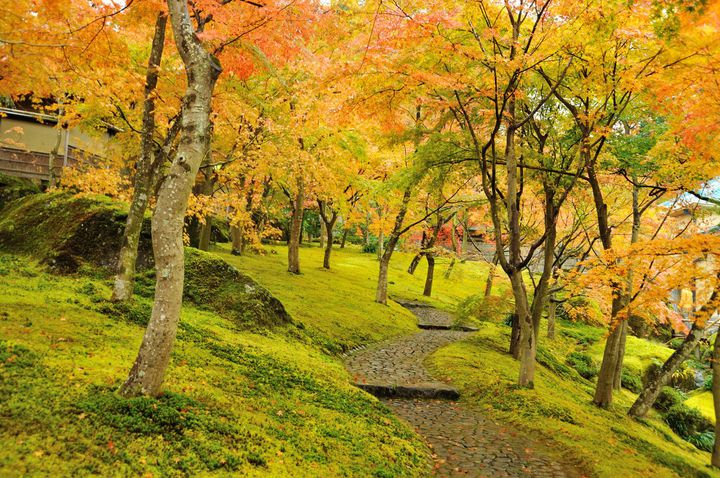
The Hakone Museum of Art is located in Gora, Kanagawa. The museum displays elegant Japanese ceramics from the Edo period from 1600-1868. They also have a moss garden inside the museum with stone pathways. A moss garden may sound a little strange or unusual, but it may be surprisingly breath-taking with the red Japanese maple trees lined up. The garden is actually why the Hakone Art Museum became one of the top destinations to see the beauty of autumn leaves in Japan around November.
Location: Hakone Museum of Art, 1300 Gora, Hakone, Ashigarashimo District, Kanagawa 250-0408 (Gora Station – 13 min. walk)
3. Autumn leaves in Hasedera 長谷寺 (Kanagawa)

Being one of the top places for people who want to get away from Tokyo for a short trip, Hasedera is a shrine located in Kamakura, Kanagawa. Hasedera is originally famous for its hydrangea flowers (known as “ajisai” in Japanese), but autumn is no less beautiful.
Location: Hasedera, 3 Chome-11-2 Hase, Kamakura, Kanagawa 248-0016 (Hasedera Station – 6 min. walk)
4. Autumn leaves at Lake Kameyama 亀山湖 (Chiba)

Lake Kameyama is an artificial lake located in the center of the Boso Peninsula in Chiba Prefecture. To visit the lake, you can travel via train from Tokyo for three hours and get off at Kazusa-Kameyama Station. There’s rich nature and forest surrounding the lake, which has a beautiful view of the autumn leaves. The lake offers many places to explore and even has gorgeous hidden spots. The best time to see the autumn leaves is between late November and early December.
Location: 124-1 Toyodakyusugamata, Kimitsu, Chiba 292-0523 (Kazusa-Kameyama – 10 min. walk)
5. Autumn leaves at Kameiwa Cave 亀岩の洞窟 (Chiba)

Who would have thought that, in Chiba, there was a magical place like Kameiwa Cave? Located in Chiba Prefecture, which is only an hour from Tokyo, it’s known to be a unique site for its eye-catching scenery constantly changing depending on the season, weather and time of day. At certain points throughout the year, when the sunlight hits through the opening, the reflection creates a heart shape. You might think this is a natural spot, but in reality, the cave is man-made and was excavated around 350 years ago to supply water to the rice fields. Due to its height of about 15 meters high, it’s difficult for us to believe that it’s man-made.
Location: Sasa, Kimitsu, Chiba 292-0526 (Furusato Bussankan Bus Stop – 15 min. walk)
6. Autumn leaves at Iwadatami Riverside Lane 岩畳通り (Saitama)
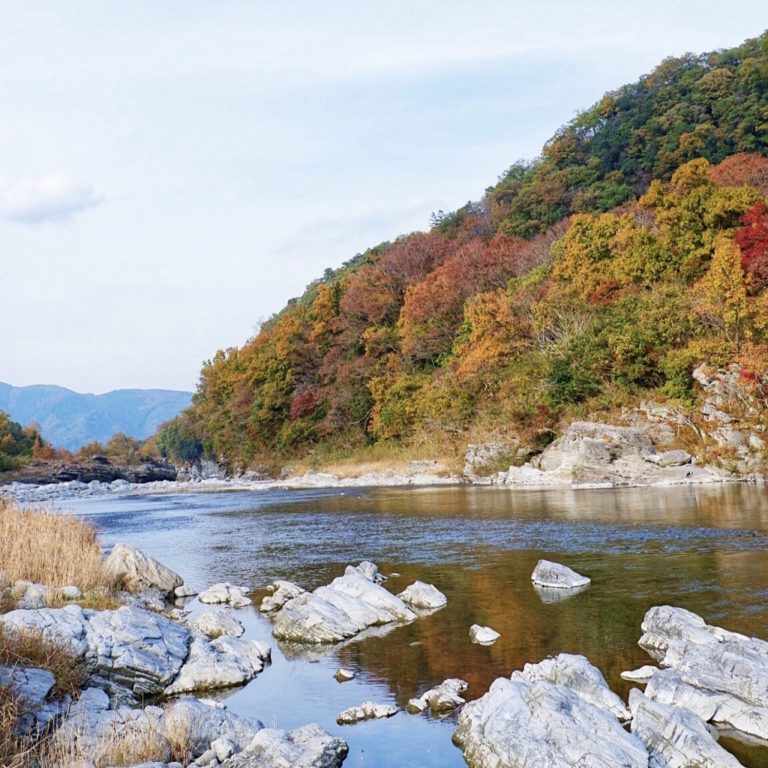
Iwadatami Riverside Lane is a place where there are many extensive rock formations. This attraction is located in Nagatoro, Saitama, which is approximately two hours away from Tokyo. The area is covered by vast natural rock formations 80 meters wide and 500 meters long. The current of the Arakawa River erodes the crystal schist in the area, creating fault valleys and rock terraces. That specific formation is called “iwa-datami” because it resembles a tatami mat covering the floor. Around it, you’ll find circular holes created by the flow of the Arakawa River, as well as layers and faults of various shapes. On top of the beautiful formations, Iwadatami Riverside Lane lets you enjoy the warm colors of autumn leaves in the Kanto area.
Location: Nagatoro, Chichibu District, Saitama 369-1305 (Nagatoro Station – 5 min. walk)
7. Autumn leaves in Hananuki Gorge 花貫渓谷 (Ibaraki)

Known as the most famous viewing spot to see autumn leaves in North Kanto, Hananuki Gorge is located in Takaogi, Ibaraki. From mid to late November, it has vibrant-colored autumn leaves that fill the air. The hiking trail is about an hour on foot. A number of ravines and waterfalls stretch across the Hananuki Gorge; stunning views connect from Hananuki Dam to Namerigafuchi and Kotakizawa Campground. With Shiomi Falls below and tree branches jutting along with the crystal clear Hananuki River, visitors can experience the autumn leaves up close.
Location: 1954 Nakadogawa, Takahagi, Ibaraki 318-0104 (around 2.5-hour car ride from Tokyo Station)
8. Autumn leaves/colors in Hitachi Seaside Park 国営ひたち海浜公園 (Ibaraki)
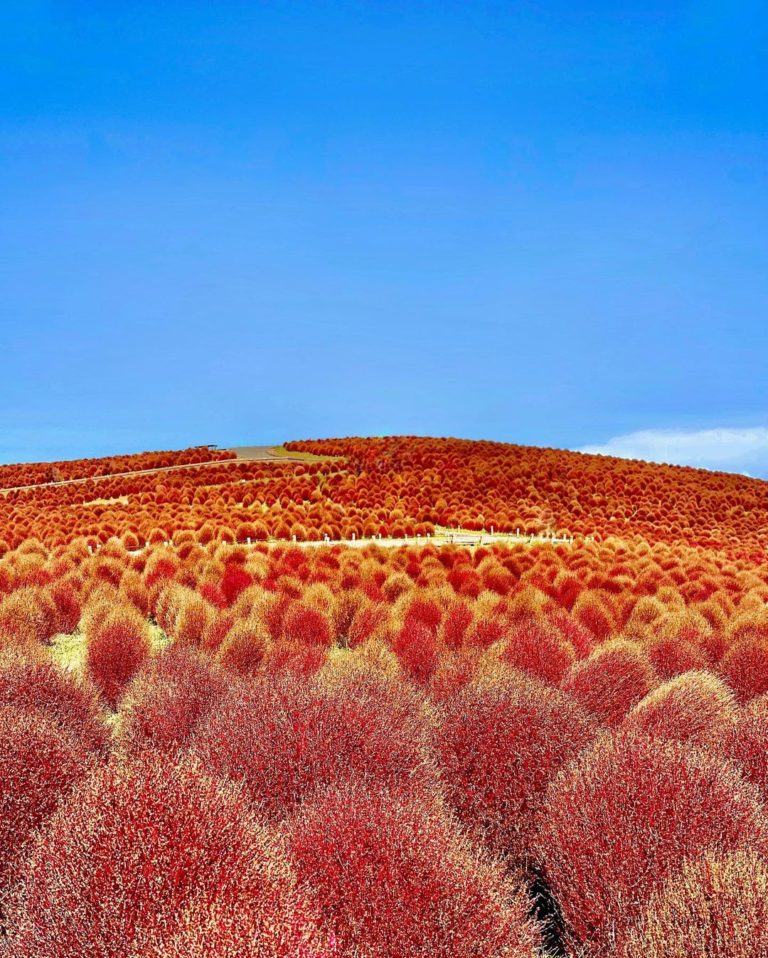
Hitachi Seaside Park is a government-run park along the coastline of Hitachinaka City, offering natural scenery, rich with plants and flowers. Tulips and nemophila bloom in Spring; roses and sunflowers in Summer; cosmos and Kochia in Autumn. From late September to early October, summer begins to slowly shift to autumn colors, and Kochia plants turn from shades of green to scarlet red. Mid-October is when the Kochia plants will begin the change their color to red. The bright autumn leaves coloring Miharashi no Oka hills a deep red color also provides a great view.
Location: 312-0012 Ibaraki, Hitachinaka, Mawatari, 605-4 – Katsuta Station (海浜公園西口 Bus Stop – 10 min. walk)
9. Autumn leaves at Ryuzu Falls 竜頭ノ滝 (Tochigi)
Ryuzu Falls is one of the representative waterfalls in Oku-Nikko. Its branching waterfall resembles a dragon’s head. Known as one of the three largest waterfalls in Oku-Nikko, it’s located between Yudaki Falls on Lake Yunoko and Kegon Falls on Lake Chuzenji. This waterfall is 210 meters long and flows rapidly over stepping stones 10 meters wide which were created by the eruption of Mt. Nantai. The water aggressively hit the boulders and branched out near the basin. As a result, its shape formed into what is resembled a dragon’s head and gave the waterfall its name, Ryuzu. In combination with the majestic water, Kanto’s variety of autumn leaves makes it another great place to visit during the fall.
Location: Chugushi, Nikko, Tochigi 321-1661 – Ryuzu No Taki Bus Station (Ryutonotaki Bus Stop – 1 min. walk)
10. Autumn leaves at Ryuoukyo Gorge 龍王峡 (Tochigi)

Last, but not least, is Ryuoukyo Gorge. It’s a gorge on the Kinu River located about three kilometers north of the Kinugawa hot spring resort. It has been formed by the erosion of the Kinu River over a long period of time. The gorge is about four kilometers long and is located right between Ryuoukyo Station and Kawaji-onsen Station on the Yagan Railway. There are several trails along the canyon. It’s a popular spot from late October to early November to view the stunning autumn leaves, but early summer is also a wonderful time to visit to enjoy what nature has to offer.
Location: Fujihara, Nikko, Tochigi 321-2521 (Ryūōkyō Station – 7 min. walk)
Overall, you can enjoy the autumn leaves in Kanto area by viewing the autumn leaves in the historic gardens or the leaves changing colors amidst the vast nature. There are many places to choose from from the list we provided above. Which ones have you visited? Or which one will you visit?
Related articles:





